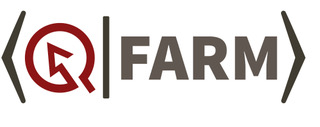Summer Physics Researchers

Jean-Michel Borit
I am a second-year undergrad majoring in physics (quantum science and information pathway). I expect to graduate in 2024. I am thinking of a maths minor and an EE coterm (I have not applied to any of these two programs yet).
Describe the project you will be working on this summer. I have been involved in my lab for a year now, so there are a lot of things I will be doing in parallel over the summer. My main field of interest is cavity quantum electrodynamics. Basically, I work with color centers in diamonds to harness the quantum-mechanical properties of light for several applications, which include quantum sensing and quantum communications (scalable quantum networks, for instance). I do finite-frequency time-domain (FDTD) simulations to design and optimize nanophotonic devices. The devices I work with are, predominately, one-dimensional photonic crystals. Fabrication is handled by other members of the team.
How did you become interested in quantum? I became interested in quantum back in high school. I found it very fun because of how counterintuitive it was. After joining the Vuckovic group, I realized it has many exciting real-world applications that promise to better our technologies, which furthered my passion for the subject.
What other activities are you involved with? When I am not doing schoolwork, I like to fence and do taekwondo recreationally. I also enjoy going on hikes.

Vijay Nathan Josephs
I am an undergraduate in the class of 2024, double-majoring in physics and math.
Describe the project you will be working on this summer. In nearest-neighbor interacting systems, quantum information can only be transferred down a chain of qubits in linear time, achieved by sequentially swapping the states of adjacent particles. However, experiments involving ultracold atoms and trapped ions naturally realize long-range interactions instead of nearest-neighbor ones. Theoretical Lieb-Robinson bounds suggest that such long-range interactions may be able to spread information down the chain faster than linear time. However, in some cases, no known protocol exists that saturates these bounds. We wish to explore whether one can achieve such a protocol, by leveraging recent developments in quantum state transfer and operator spreading.
How did you become interested in quantum? I initially became interested in quantum information while in high school, since I found popular portrayals of quantum effects to be both nonintuitive and fascinating.
What other activities are you involved with on campus? I am the president of the Stanford Quantum Computing Association, I act in student theater groups on campus, and I sing.

Julia Zhu
I am a BS candidate in Physics, and my expected graduation date is 2024. I am working with Professor Zhi-Xun Shen.
Describe the project you will be working on this summer. I will be working on a project to investigate nonlinear microwave impedance microscopy (MIM). Currently, most MIM measurements are made at a single frequency of about 1 GHz. Nonlinear MIM entails higher harmonic detection, allowing us to measure the nonlinear electrical susceptibility and conductivity of materials. While other forms of nonlinear measurement techniques exist (i.e. the scanning nonlinear dielectric microscope), none are as simple to set up as MIM would be. Such an advancement would pave the way for studying many new materials of interest.
How did you become interested in quantum? I became interested in quantum after taking a couple of physics classes in high school that briefly introduced quantum topics like quantum cryptography, particle in a box, and the Stern-Gerlach experiment.
What other activities are you involved with on campus? On campus, I am also involved with Camp Kesem, Cardinal Free Clinics, and Little Libraries. I am also a Peer Tutor at Stanford’s Center for Teaching and Learning.
